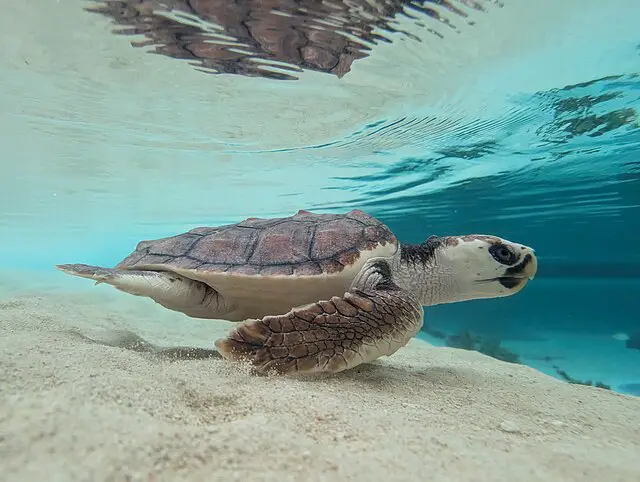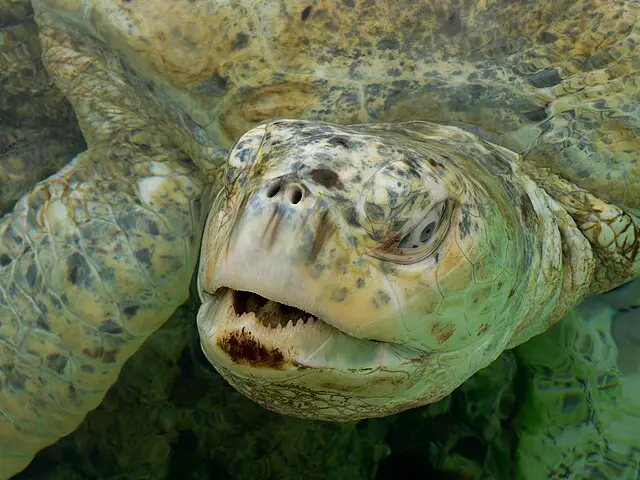Imagine being trapped underwater for months with no way to surface for air. For most creatures, that would spell certain death. But not for some turtles. Instead of drowning, they rely on an unusual trick—they breathe through their butts. Yes, you read that right. This bizarre but brilliant survival mechanism allows certain species of turtles to extract oxygen from water using their cloaca, a multipurpose opening that serves multiple bodily functions. As weird as it sounds, this ability is the difference between life and death during their long hibernations beneath frozen lakes and ponds.

The Science Behind Cloacal Respiration
To understand how turtles manage this feat, let’s dive into the mechanics of cloacal respiration. Unlike mammals, which rely entirely on lungs to breathe, some turtle species—such as the Australian Fitzroy River turtle and the North American painted turtle—have evolved the ability to absorb oxygen through specialized sacs in their cloaca. These sacs, known as bursae, are lined with tiny blood vessels that facilitate gas exchange with the surrounding water. Essentially, instead of pulling air into their lungs, they extract dissolved oxygen directly from the water, allowing them to survive for months without surfacing.
Why Do Turtles Need This Ability?
For many turtles, especially those living in temperate climates, winter presents a serious challenge. When lakes and ponds freeze over, air-breathing animals are left with limited oxygen access. Unlike fish, which have gills for extracting oxygen from water, turtles would normally suffocate. But evolution has provided an ingenious solution—an alternative breathing system that allows them to stay submerged in a state of hibernation known as brumation. During this time, their metabolism slows down drastically, reducing their oxygen needs while their cloacal bursae keep them oxygenated.
The Ultimate Energy-Saving Strategy
A big part of why turtles can pull off this trick is their ability to conserve energy. Unlike humans and other mammals that require high amounts of oxygen to keep their warm-blooded bodies running, turtles are cold-blooded. Their slow metabolic rate means they don’t need nearly as much oxygen, making cloacal breathing a sufficient method of survival. As their metabolism drops, they burn less energy, produce less carbon dioxide, and avoid the buildup of harmful acids in their bodies. It’s a fine-tuned process that ensures their survival in some of the harshest winter conditions on Earth.
More Than Just a Winter Survival Tactic
Cloacal respiration isn’t just for winter survival. Some species, like the Fitzroy River turtle in Australia, use it as their primary method of breathing year-round. These turtles are incredibly aquatic and rarely surface for air, thanks to their efficient cloacal bursae. This allows them to stay submerged for extended periods while avoiding predators and conserving energy.
The Weirdest Adaptations in the Animal Kingdom
Nature is full of strange and fascinating survival mechanisms, and butt-breathing turtles are just one example. From frogs that freeze solid in winter and thaw back to life in spring, to fish that create protective mucus cocoons, the animal kingdom is full of mind-blowing adaptations. These unique traits aren’t just random quirks—they are vital evolutionary strategies that ensure survival in extreme environments.
Could Humans Ever Breathe Like This?
The idea of humans using a similar adaptation might sound like science fiction, but some researchers have explored alternative oxygen absorption techniques. While humans rely heavily on lung function, studies on rectal oxygen administration (yes, really) have suggested that certain mammals, under experimental conditions, could absorb oxygen through their intestines. While we won’t be evolving into butt-breathers anytime soon, science continues to uncover new ways that life can sustain itself in extreme conditions.
The Takeaway: Nature’s Unbelievable Ingenuity
Turtles have been around for over 200 million years, surviving mass extinctions and adapting to some of the planet’s harshest environments. Their ability to breathe through their cloaca is just another testament to nature’s ingenuity. While it may sound odd, this life-saving trick has allowed turtles to outlast many other species. Next time you see a turtle basking in the sun, just remember—it might have spent the last several months breathing in a way you never imagined!
Whether it’s a scientific curiosity or a survival marvel, one thing is clear: butt-breathing turtles prove that nature always finds a way.

